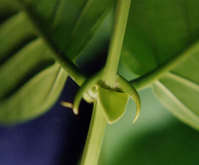LOG IN. UPLOAD PICTURES.
The Philippines has Zambo Mart to help propagate the Chavacano Language.
Difference between revisions of "Cat's Claw"
m (Protected "Cat's Claw" ([edit=autoconfirmed] (indefinite) [move=autoconfirmed] (indefinite))) |
|
(No difference)
| |
Revision as of 02:06, 30 November 2012
Herbal Remedies and Medicinal Cures for Diseases, Ailments & Illnesses that afflict Humans and Animals
Aloe Vera •
Astragalus •
Bankoro •
Bilberry •
Bitter Gourd (Ampalaya) •
Bitter Orange •
Black Cohosh •
Cat's Claw •
Chamomile •
Chasteberry •
Coconut •
Cranberry •
Dandelion •
Echinacea •
Ephedra •
European Elder Tree •
Evening Primrose •
Fenugreek •
Feverfew •
Flaxseed •
Garlic •
Ginger •
Ginkgo •
Ginseng (Asian) •
Golden Seal •
Grape Seed •
Green Tea •
Hawthorn •
Hoodia •
Horse Chestnut •
Kava •
Lavender •
Licorice •
Malunggay Moringa Oleifera •
Milk Thistle •
Mistletoe •
Passion Flower •
Peppermint Oil •
Red Clover •
Ringworm Bush (Akapulko) – Cassia alata •
Saw Palmetto •
St. John's Wort •
Tawa Tawa •
Turmeric •
Valerian •
Yohimbe •
accept the bitter to get better
 Cat's Claw Vine | |||
| |||
 Cat's Claw Wood or Bark | |||
| |||
Cat's Claw
The medicinal herb Cat's Claw as an alternative herbal remedy for viral infections - Cat's claw grows wild in many countries of Central and South America, especially in the Amazon rainforest. CAT'S CLAW is a thick, long, slow growing woody vine that grows between 400 and 800 meters above sea level in the rain forests. This vine gets its name from the small, sharp thorns, two at the base of each pair of leaves, which looks like a cat's claw. These claws enable the vine to attach itself around trees climbing to a height of 100 feet or higher. The root (which can grow to the size of a watermelon) and the inside of the bark are the parts of the plant used in alternative herbal remedies. Because demand for this herb has increased greatly in the past few years, the Peruvian government now forbids harvesting the roots of the plant. Since the same compounds are present in the bark as the root, the plant is now harvested 3 feet above the ground. This preserves the plant so that it can be harvested again a few years later.Common Names--cat's claw, uña de gato
Latin Names--Uncaria tomentosa, Uncaria guianensis Picture of Cat's Claw Vine Picture of Cat's Claw Bark or Wood
What Cat's Claw Is Used For
- Cat's claw has been used for centuries in South America to prevent and treat disease.
- It has been used for a variety of health conditions, including viral infections (such as herpes and HIV), Alzheimer's disease, cancer, and arthritis.
- Cat's claw has been used to support the immune system and promote kidney health, as well as to prevent and abort pregnancy.
- Herbal remedy for viral infections.
How Cat's Claw Is Used
The inner bark of cat's claw is used to make liquid extracts, capsules, and teas. Preparations of cat's claw can also be applied to the skin.
What the Science Says about Cat's Claw
- There is not enough scientific evidence to determine how well cat's claw works for any health problem, including arthritis, HIV, or cancer. *Small studies in humans have shown a possible benefit of cat's claw in osteoarthritis and rheumatoid arthritis, but no large trials have been done. In laboratory studies, cat's claw stimulates part of the immune system, but it has not been proven to reduce inflammation or boost the immune system in humans.
- The National Institute on Aging is studying how cat's claw may affect the brain. Findings may point to new avenues for research in Alzheimer's disease treatment.
Side Effects and Cautions about Cat's Claw
- Few side effects have been reported for cat's claw when it is taken at recommended dosages. Though rare, side effects may include headaches, dizziness, and vomiting.
- Women who are pregnant or trying to become pregnant should avoid using cat's claw because of its past use for preventing and aborting pregnancy.
- Because cat's claw may stimulate the immune system, it is unclear whether the herb is safe for people with conditions affecting the immune system.
- Tell your health care providers about any complementary and alternative practices you use. Give them a full picture of what you do to manage your health. This will help ensure coordinated and safe care.